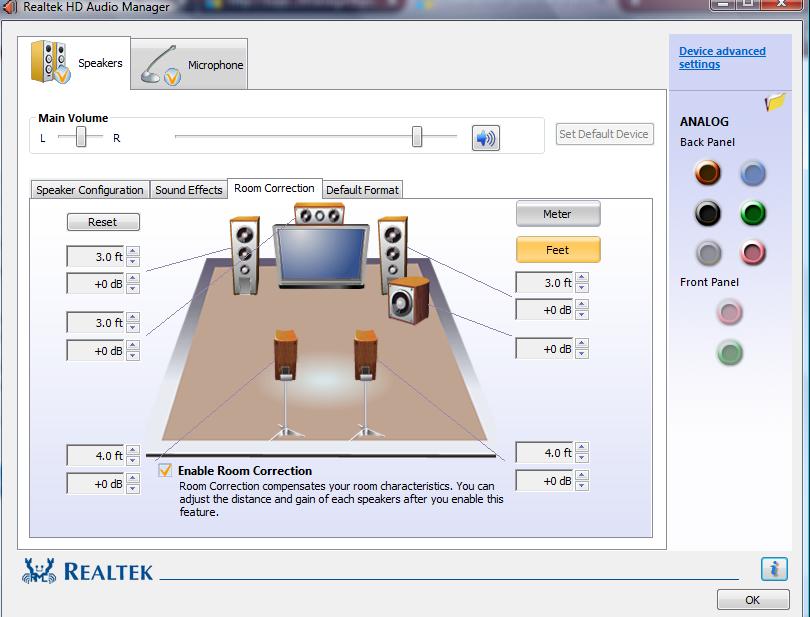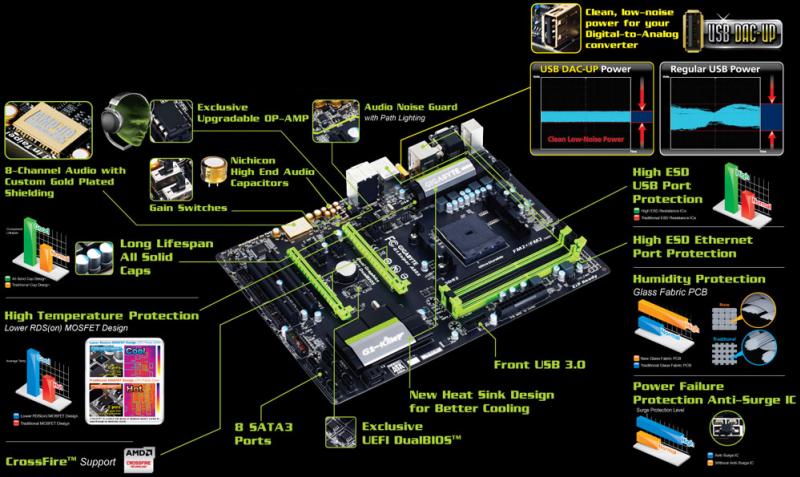Tests with the PC4uMusic configuration for 4 speakers in a traditional quadraphonic arrangement were carried out with 24-bit stereo Waveform Audio File Format recordings from NIE teatr (NOT a theater) in north-eastern Poland. This theater is a new impresario stage in the heart of the city Bialystok. One recording was directly from the PA mixer. The second one was from microphones that recorded what the audience heard in the theater. There was also a quadraphonic version converted from these two stereo recordings.

64 bit AIMP with Windows Audio Session Application Programming Interface set to 4-channel operation with 32/192 oversampling converted the digital recording signal to analog for speaker driving.

 A reference motherboard was used in which the bus speed is set to 384 MHz and optimally selected values for RAM memory
A reference motherboard was used in which the bus speed is set to 384 MHz and optimally selected values for RAM memoryThe settings were identical for the motherboard, in which the manufacturer took care of the optimal hardware configuration in the galvanically isolated Audio Noise Guard section. The built-in Realtek ALC898 sound processor provides an SNR of 110 dB. The capacitors are high-end. You can freely choose the IC for the output, which is called Exklisiv Uppgradable OP-AMP. There are also gold-plated minijack sockets. Unfortunately, the system bus must remain at the factory 100 MHz.
The first motherboard performs slightly better, although on it the ALC 889A processor only provides 108 dB SNR
Tests confirm how important software setting is. The sound processors on both boards are capable of 24-bit/192 kHz hardware playback, but oversampling with AIMP works better when listening to music, and works more precisely when the bus transmission is set to 384 MHz and RAM interrupts are optimally configured for this. In this respect, the settings of the more advanced board were much more modest and when oversampling for 4 channels it was audible more clearly.
There were 3 people on stage in the theater. Playing back recordings of their voices was also compared to how they sounded in a regular conversation. This allowed us to precisely find nuances in the capabilities of these two motherboards for music playback. However, the most important thing was listening to the pianist's playing. The first motherboard was most consistent with the original.
The following people appeared on stage:
Elena Rutkowska – an actress, singer, composer, creator of stage programs. A graduate of the Kyiv National Theatre, Cinema and Television University.
Walentyn Dubrowskyj - an outstanding musician, pianist, creator of music for many films. Graduate of the National Music Academy of Ukraine in Kiev.
Yurij Tokar – a doctor and professional musician. Graduate of the Lviv National Medical University.




WASAPI (Windows Audio Session API) is newer technology from Microsoft which employs methods for directly sending audio
ReplyDeleteDavid Aleksandersen has extensive experience from the audiovisual industry and is an active blogger. He has been responsible for developing and executing marketing, sales and initiatives in knowledge transfer and partner training for more than 20 years.
DeleteRoom correction processing optimizes the listening experience for a particular location in the room, for example, the center cushion of your couch, by automatically calculating the optimal combination of delay, frequency response, and gain adjustments.
ReplyDeletehttps://learn.microsoft.com/pl-pl/windows-hardware/drivers/audio/room-correction
An impresario theater is one with its own building and a technical and administrative team, without a permanent acting team, staging performances prepared elsewhere by other entities.
ReplyDelete